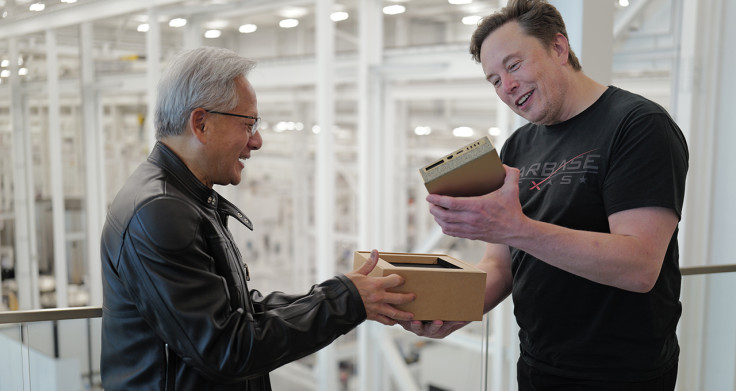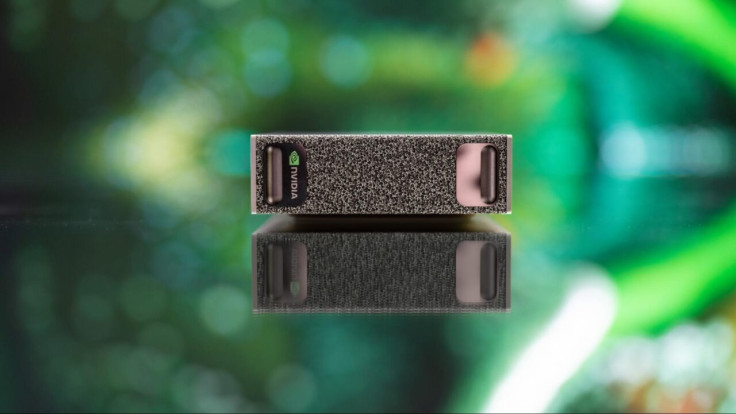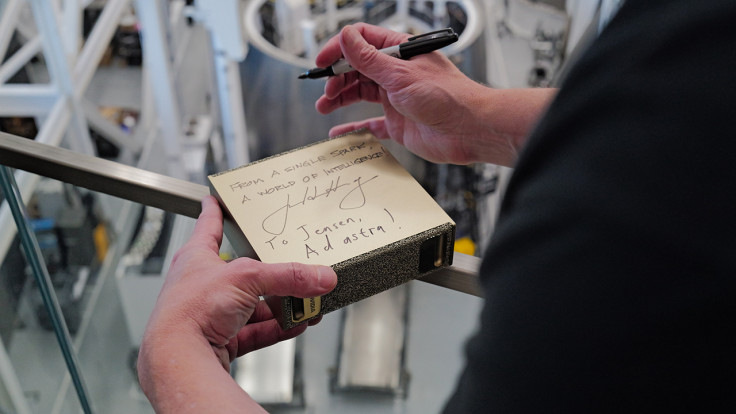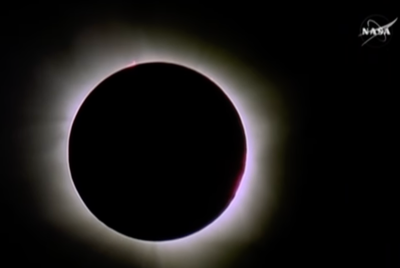Elon Musk Welcomes NVIDIA's DGX Spark: The World's Smallest AI Supercomputer Lands at SpaceX
DGX Spark arrives at Starbase, fusing aerospace and AI as NVIDIA delivers petaflop power to Elon Musk's rocket lab

In a striking collision of rockets and AI, NVIDIA CEO Jensen Huang personally delivered the first DGX Spark — billed as the world's smallest AI supercomputer — to Elon Musk at SpaceX's Starbase facility in Texas.
The moment signalled more than a handshake: it symbolised the convergence of space exploration and edge AI computing, bringing petaflop-scale performance from the data centre to the rocket factory.
Huang arrived at the rocket factory amid towering engines and gleaming steel, walking past rows of SpaceX engineers before joining Musk in the company cafeteria.
There, the two tech titans shared pizza and stories, including Huang's recollection of delivering the first DGX system to OpenAI nearly a decade ago.
'Imagine delivering the smallest supercomputer next to the biggest rocket,' Huang quipped, referencing the nearby Starship, the world's most powerful launch vehicle.
DGX Spark: A Petaflop in Your Palm

The DGX Spark is a breakthrough in both form and function. Roughly the size of a hardcover book and weighing just 1.2 kilogrammes, it delivers up to 1 petaflop of AI performance at FP4 precision.
At its core is the NVIDIA GB10 Grace Blackwell Superchip, paired with 128GB of unified CPU-GPU memory, enabling local prototyping, fine-tuning and inference without reliance on cloud infrastructure.
The system also includes NVIDIA ConnectX networking, NVLink-C2C interconnects for 5x PCIe bandwidth, NVMe storage, and HDMI output for visualisation.
It ships with the full NVIDIA AI software stack, including pretrained models, CUDA libraries and NVIDIA NIM microservices, making it a ready-to-deploy platform for everything from image generation to multimodal agent development.
SpaceX and Spirit of AI Exploration
The timing of the handoff was no coincidence. It came as SpaceX prepared for the 11th test flight of Starship, reinforcing the symbolic fusion of space exploration and AI innovation.
Musk, who serves as SpaceX's chief engineer, has long championed the integration of AI into aerospace systems, from autonomous navigation to real-time telemetry analysis.
The DGX Spark's arrival at Starbase underscores SpaceX's commitment to pushing the boundaries of both physical and computational engineering. As Huang noted during the visit, the DGX Spark delivers five times the computational power of the original DGX-1 system while operating at just 40 watts.
A Full-Circle Moment for NVIDIA and OpenAI

The launch of DGX Spark also represents a full-circle moment for NVIDIA. In 2016, Huang delivered the first DGX-1 system to OpenAI, a move that helped catalyse the modern AI boom.
Now, nearly a decade later, the company is once again placing cutting-edge compute power into the hands of AI pioneers, but this time, in a form factor small enough to fit under one arm.
According to NVIDIA, DGX Spark systems are already being deployed across a wide range of environments—from robotics labs and creative studios to universities and startups.
Early adopters include Zipline, Arizona State University, and Refik Anadol Studio, all of whom are using the device to run large language models, vision AI, and edge inference workloads.
Context: From DGX-1 to DGX Spark
NVIDIA's DGX line has long powered AI research at scale. DGX Spark, codenamed initially Project Digits, represents a move to democratise supercomputing.
During his visit, Huang recalled delivering the first DGX system to OpenAI nearly a decade ago, framing this delivery as the next step of that journey.
NVIDIA partners (Acer, Asus, HP, Dell, MSI, GIGABYTE, Lenovo) are already building desktop variants using the Spark architecture.
A New Era of Desktop AI
DGX Spark is not just a hardware breakthrough—it marks a fundamental platform shift. By delivering data-centre-class performance in a desktop form factor, it enables developers to build and deploy AI models locally, reducing latency, cost and environmental impact. The system's low power consumption and compact design make it ideal for edge computing, remote research, and creative experimentation.
With DGX Spark now available globally via NVIDIA.com and OEM partners including Dell, HP and Lenovo, the AI revolution is no longer confined to the cloud. It's landing on desktops and, in this case, on rocket factories around the world.
What This Means for AI's Future
DGX Spark challenges the notion that cutting-edge AI must live only in data centres. Its desktop scale may unlock new workflows in studios, autonomous systems, universities and edge deployments.
But hurdles remain: cooling, thermal limits, software maturity, and cost constraints will define how broadly it's adopted.
SpaceX may be the headliner, but broader adoption will depend on real-world results across domain applications.
© Copyright IBTimes 2025. All rights reserved.




















